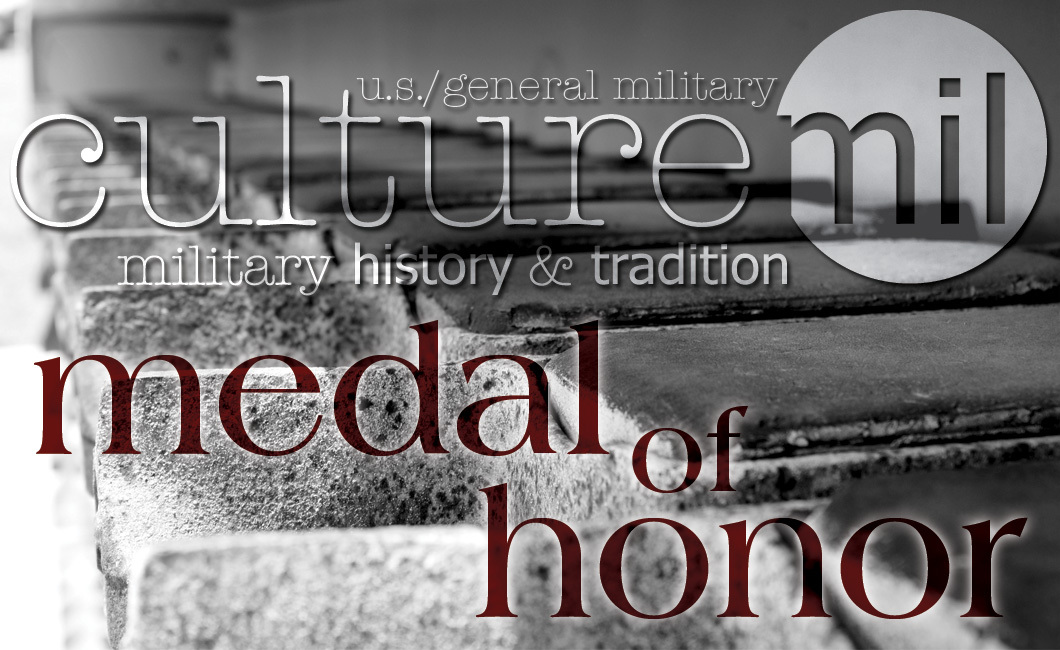- Navy Medal of Honor (The Original) – designed by Philadelphia firm William Wilson & Sons is presented to the Navy, Marine Corps and Coast Guard.
- Navy Medal of Honor (1862) –was suspended from its red, white and blue ribbon by an anchor wrapped with a length of rope. The reverse side was inscribed with the words “Personal Valor” above an open area where the recipient’s name could be engraved.
- Army Medal of Honor (1862) – was cast from the same die as the Navy Medal of Honor, with the exceptions of the anchor being replaced by an eagle perched on crossed cannon clutching a saber in its talons and “Personal Valor” being replaced with “The Congress To.”
- Army Medal of Honor (1896) – A new suspension ribbon was introduced.
- Gillespie Medal of Honor (1904) – Among the many changes, the new medal kept the star but modified the face, replacing the ring of 34 stars with “United States of America” and “Minerva Repelling Discord” to a simple profile of the helmeted Goddess of War.
- Navy Medal of Honor (1913) – The anchor was altered slightly and the ribbon was changed to the same blue silk ribbon bearing 13 stars used with the Army Medal of Honor. The Department of the Navy decided to separately distinguish medals awarded for combat and non combat:
- Navy Medal of Honor – presented for combat heroism.
- Tiffany Cross (originally known as the Maltese Cross) – presented for non combat heroism. Its lack of popularity saw the Tiffany Cross dropped in 1942, returning the Navy to a single medal.
- Air Force Medal of Honor (1965) – Although the medal was authorized in 1956, the Air Force didn’t unveil its design until 1965.
- Ribbon and Rosette (1895) – authorized by Congress on May 2, the Ribbon is to be worn with the medal and the Rosette or (knot) may be warn in lieu of it.
- http://www.cmohs.org/
- http://www.stewart.army.mil/moh/theMedal.aspx
- http://www.cmohs.org/recipient-detail/1428/walker-dr-mary-e.php
Written by Jenifer Chrisman on March 5, 2018.
“This Medal of Honor does not belong to me. This medal belongs to every man and woman who has ever served their country. We were doing what we were trained to do. We were doing our job.”
– Michael E. Thornton, Medal of Honor Recipient, U.S. Navy
Senator (Iowa) James W. Grimes introduced S. No. 82 (Public Resolution) to the Senate, designed to “promote the efficiency of the Navy,” to produce and distribute “medals of honor,” on December 9, 1861. President Abraham Lincoln signed the bill on December 21, 1861, authorizing 200 medals to be produced, and the (Navy) Medal of Honor was born. The medal was to “be bestowed upon such petty officers, seamen, landsmen and marines as shall distinguish themselves by their gallantry in action and other seamanlike qualities during the present war.”
Just over two months later, on February 17, 1862, Senator (Massachusetts) Henry Wilson introduced S.J.R. No. 82 (Senate Joint Resolution). Similar to its counterpart S. No. 82, the bill was designed to authorize “the President to distribute medals to privates in the Army of the United States who shall distinguish themselves in battle.” President Lincoln signed the bill on July 12, 1862.
TYPES of MEDALS OF HONOR
To date, 3,500 recipients have received this prestigious award. Of those, there are 71 living recipients and 19 people have received the award twice.
DOUBLE RECIPIENTS
| Name | Rank | Service | Campaign |
|---|---|---|---|
| Frank D. Baldwin | First Lieutenant | U.S. Army | Indian War Campaigns |
| Smedley Darlington Butler | Major | U.S. Marine Corps | Haiti 1915 |
| John Cooper | Coxswain | U.S. Navy | Civil War |
| Louis Cukela | Sergeant | U.S. Marine Corps | World War I |
| Thomas W. Custer | Second Lieutenant | U.S. Army | Civil War |
| Daniel Joseph Daly | Gunnery Sergeant | U.S. Marine Corps | Haiti 1915 |
|
Charles F. Hoffman (aka Ernest Janson) |
Gunnery Sergeant | U.S. Marine Corps | World War I |
| Henry Hogan | First Sergeant | U.S. Army | Indian War Campaigns |
| John Joseph Kelly | Private | U.S. Marine Corps | World War I |
| John King | Watertender | U.S. Navy | Interim 1901-1911 |
| Matej. Kocak | Sergeant | U.S. Marine Corps | World War I |
| John Lafferty | Fireman | U.S. Navy | Civil War |
| JOHN McCloy | Coxswain | U.S. Navy | Boxer Rebellion |
| Patrick Mullen | Boatswain's Mate | U.S. Navy | Civil War |
| John Henry Pruitt | Corporal | U.S. Marine Corps | World War I |
| Robert Sweeney | Ordinary Seaman | U.S. Navy | Interim 1871-1898 |
| Albert Weisbogel | Captain of the Mizzen Top | U.S. Navy | Interim 1871-1898 |
| Louis Williams | Captain of the Hold | U.S. Navy | Interim 1871-1898 |
| William Wilson | Sergeant | U.S. Army | Indian War Campaigns |
Only one woman has ever earned this honor. Dr. Mary Walker was awarded her medal on November 11, 1865, from President Andrew Johnson. The medal was rescinded in 1917, along with 910 other recipient’s medals, and restored to her in 1977 by President Jimmy Carter.
Since the Civil War, the Medal of Honor is the highest award for valor the United States can bestow upon an individual. It is a symbol of respect, honoring the bravest of the brave.
| Campaign | Recipients | Campaign | Recipients |
|---|---|---|---|
| 1871 Korean Campaign | 15 | Interim (1920-1940) | 18 |
| Action Against Philippine Outlaws | 6 | Korean War | 146 |
| Boxer Rebellion | 58 | Mexican Campaign (Vera Cruz) | 55 |
| Civil War | 1,522 | Philippine Insurrection | 84 |
| Dominican Campaign | 3 | Second Nicaraguan Campaign | 2 |
| Haiti (1915) | 6 | Somalia Campaign | 2 |
| Haiti Campaign (1919-1920) | 2 | Vietnam War | 262 |
| Indian War Campaigns | 423 | War In Afghanistan | 14 |
| Interim (1866-1870) | 11 | War In Iraq | 4 |
| Interim (1871-1898) | 100 | War With Spain | 110 |
| Interim (1901-1911) | 50 | World War I | 127 |
| Interim (1915-1916) | 8 | World War II | 472 |
For a full and current list of all Medal of Honor winners with details on their citation(s), in alphabetical order, visit cmohs.org/recipient-archive.php. To view the medals, visit cmohs.org/medal-types.php.
Sources:



